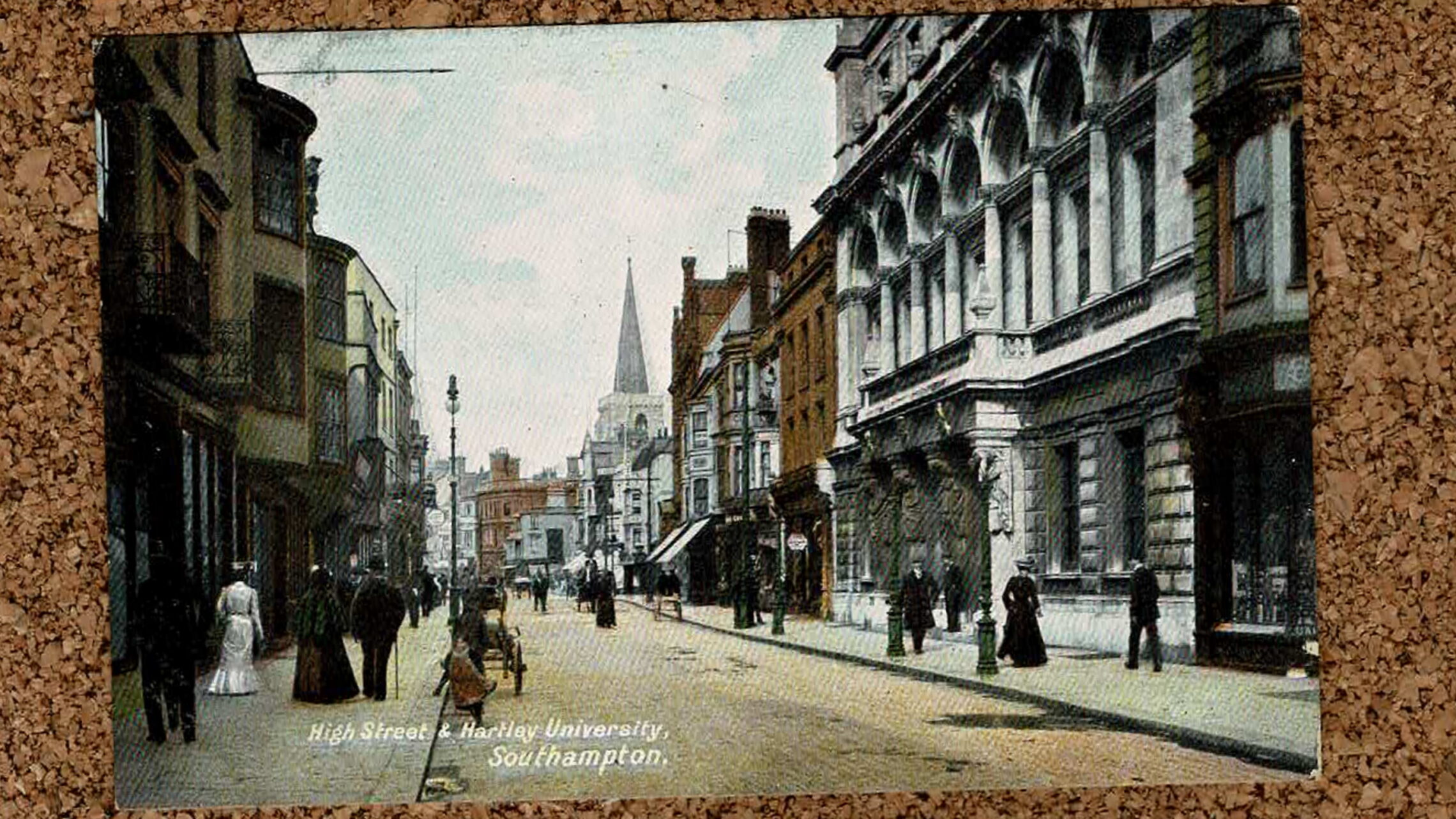In this card, sent on 24 September 1904, the handsome stone building on the right is Hartley University – more properly the Hartley University College. This became the University of Southampton.
The origins lie in the bequest of Henry Robinson Hartley in 1850. Hartley was heir to a family of wine merchants, but did not follow the family business. Eccentric and studious, Hartley left £103,000 in his will to the Corporation of Southampton to be invested, and the Corporation to:
employ the interest, dividends and annual proceeds in such a manner as best promote the study and advancement of the sciences of Natural History, Astronomy, Antiquities, Classical and Oriental Literature in the town, such as by forming a Public Library, Botanic Gardens, Observatory, and collections of objects with the above sciences.”
This was not a precise will (university fundraisers please note) and led to arguments about what should be done with the money. There were legal challenges. And as the Hampshire Advertiser of 18 October 1862 recorded, these cost money:
That so enormous an amount of money should by divers processes, alien to the living thoughts and expectations of the generous and benevolent donor, be dwindled down to £70,000 before any portion of it could be devoted to the considerate purposes contemplated by him, is the ugly fact ever to accompany the history of the institution…”
But this £70,000 still counted for something, and the Corporation established the Hartley Institution, which was opened in October 1862 by the Prime Minster, Lord Palmerston. The town had never seen such a grand occasion.
By 1865, the Institution had some 700 members, many of these studying part-time in the evening. But subscriptions were a limited source of income, and the second half of the 19th century was a tough time, economically. (See, for example, the enrolments at the Institute for the Diffusion of Knowledge in Preston, about which I have written previously). In 1883 the Institution became Hartley College, and the fees paid by increasing numbers of students enabled expansion.
The Twentieth Century brought further change and development. Following inspection (and approval!) by the University College Grants Committee, the Hartley College became Hartley University College, and taught students for University of London degrees. More students created a need for more space, and a move from the High Street to Highfield (where the current main campus is located) was mooted, and funds raised.
In June 1914, the new campus for the renamed University College Southampton was opened by Viscount Haldane (he of the research funding principle, amongst many other things.) Immediately it was requisitioned for use as a military hospital – the transfer from the High Street did not take place until 1920.
In 1952 a Royal Charter was awarded – the first such to a university of Queen Elizabeth II’s reign – and the University of Southampton came formally into being.
Today’s university occupies seven campuses – five in Southampton, one in Winchester, and one in Malaysia. It was a founding member of the Russell Group, and as of 2022 has over 21,000 students and almost 6,000 staff.
The card was posted to Cecil Ricardo Esq, of Christchurch, Hants:
Hope you reached home safely, and that you feel quite well after your adventures today”













I always like to see old photo’s of my home city before WW2, Holyrood Church where my father was a choirboy intact especially so, much of the pictured area was severely damaged or destroyed. The 4 statue pillars supporting the frontage were moved to the Highfield campus to one side of the current Hartley Library entrance, but like many things considered to represent ‘white maleness’ are now hidden for public view behind high hedging, much like the Rothenstein Mural which was boarded over to ‘protect’ it following the deranged rantings of the Student Union’s President in 2018, when we finally… Read more »